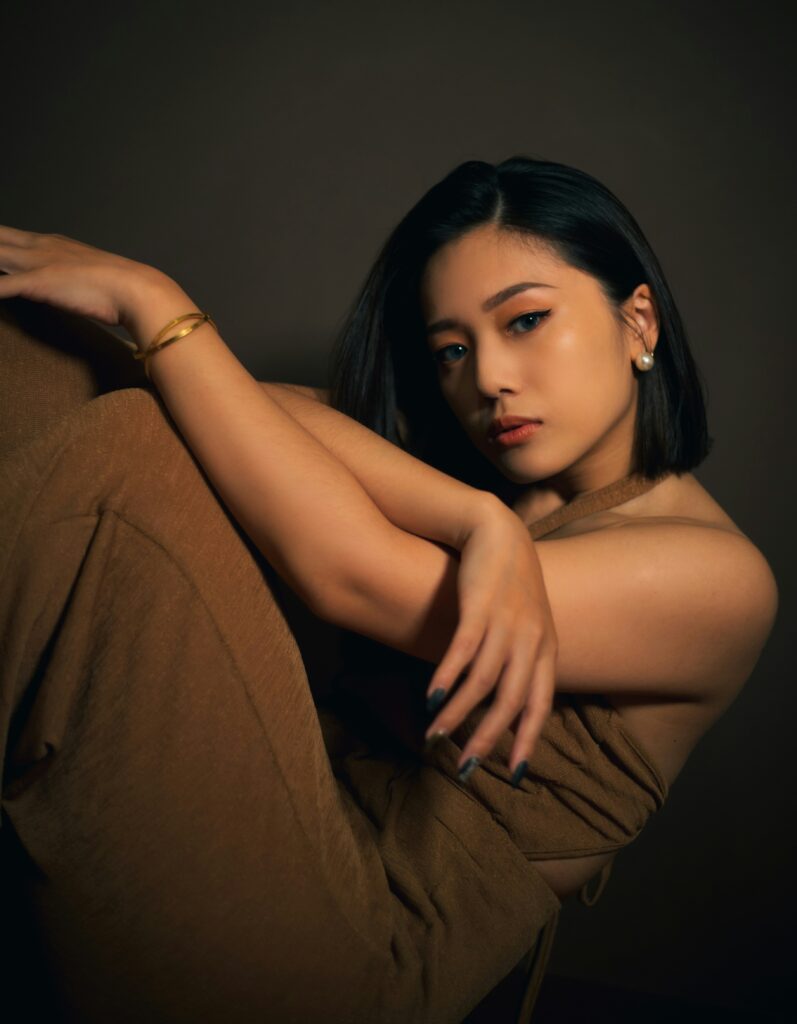Snail Mucin vs Aloe Vera: Which One Does More for Your Skin?
You’ve probably seen both of these ingredients in soothing serums, hydrating gels, and post-acne recovery products. Snail mucin and aloe vera are often used for similar skin goals—calming redness, hydrating, and soothing irritation. But if you’re choosing just one, which offers more real benefit?
In this post, we’re comparing them head-to-head: how they work, what the science says, and when you might choose one over the other.
- Snail Mucin vs Aloe Vera: Which One Does More for Your Skin?
- Aloe and Mucin: What They Are and How They’re Traditionally Used
- When Should You Use Aloe Vera or Snail Mucin? A Science-Based Guide
- How to Choose an Effective Snail Mucin or Aloe Vera Product
- Can You Use Aloe Vera and Snail Mucin Together?
- Final Verdict: Aloe vs Snail Mucin—Who Wins?
- What’s Your Experience with Aloe or Snail Mucin?

Snail mucin and aloe vera are often used for similar skin goals—calming redness, hydrating, and soothing irritation.
Aloe and Mucin: What They Are and How They’re Traditionally Used
| Ingredient | Origin & Composition | Common Skincare Formats |
| Snail Mucin | Secretion from snails (esp. Helix aspersa) | Serums, creams, barrier balms |
| Aloe Vera | Gel from inner leaf of Aloe barbadensis | Gels, creams, sprays, patches |
Snail mucin contains glycoproteins, peptides, hyaluronic acid analogs, enzymes, and trace minerals. It’s the same fluid snails secrete to regenerate their own skin and shells after injury.
Aloe vera gel is composed of over 99% water but includes polysaccharides (like acemannan), antioxidants, enzymes, amino acids, and vitamins A, C, and E. These contribute to its wound-healing and anti-inflammatory properties.
Fun Fact: While aloe has been used since ancient Egyptian times, snail mucin was rediscovered in the 1990s when Chilean snail farmers noticed their skin healed unusually quickly after handling snails.
The Science Behind the Soothe: How Each Ingredient Works
Let’s break down what each ingredient does under the microscope—and why it matters for your skin barrier, healing response, and inflammation levels.
Snail Mucin
- Stimulates fibroblasts → promotes collagen and elastin synthesis
- Suppresses MMP enzymes → helps prevent collagen degradation
- Delivers antioxidant enzymes → supports protection against free radical damage
- Hydrates deeply → glycosaminoglycans bind water and maintain moisture
Aloe Vera
- Inhibits inflammation → via bradykinin suppression and salicylic acid-like activity
- Accelerates re-epithelialization → supports faster wound closure
- Provides antioxidants → vitamins C and E, plus catalase and glutathione
- Reduces bacterial load → anthraquinones provide antimicrobial action
| Skin Function | Snail Mucin | Aloe Vera | Key Difference | Winner |
| Wound Healing | ⭐⭐⭐ | ⭐⭐⭐⭐ | Aloe acts faster on surface-level wounds | Aloe Vera |
| Deep Hydration | ✅ | ✅ | Snail mucin holds moisture deeper in skin | Snail Mucin |
| Anti-Inflammatory | ⭐⭐ | ⭐⭐⭐⭐ | Aloe has stronger evidence for inflammation | Aloe Vera |
| Antioxidant Defense | ✅ | ✅ | Both offer support via different antioxidant classes | Tie |
| Antimicrobial Action | ⭐ | ⭐⭐⭐ | Aloe is more effective against common microbes | Aloe Vera |

Pro Tip:
Snail mucin supports deeper tissue repair (like collagen remodeling), while aloe vera is your go-to for surface irritation, redness, and microbe-triggered inflammation.
Clinical Evidence: Snail Mucin vs Aloe Vera in Human Studies
This is where aloe vera currently leads. While both ingredients are biologically active, only aloe has been tested extensively in humans across a range of skin concerns.
Aloe Vera: Strong Clinical Support
A systematic review of 23 studies found that aloe vera gel:
- Accelerates healing in burns (more effective than silver sulfadiazine)
- Reduces post-surgical pain and speeds up wound closure (e.g., cesarean incisions)
- Improves healing in chronic ulcers and pressure sores
- Shows mixed but encouraging results for radiation dermatitis
Snail Mucin: Promising But Preclinical
Most data for snail mucin is in vitro or from animal studies:
- Shown to reduce wrinkle depth and improve collagen density in UVB-exposed mice
- Reduces oxidative stress markers and MMP activity in both topical and oral models
- Some early human topical studies show improved hydration and skin texture
| Skin Concern | Aloe Vera Support | Snail Mucin Support |
| Burn and Wound Care | ✅✅✅ Clinical trials support use | ❌ No direct human data |
| Anti-Aging / Wrinkles | ❕ Limited data | ✅ Strong preclinical + emerging topical evidence |
| Redness & Inflammation | ✅✅✅ Documented relief | ✅ Mild antioxidant-based relief |
| Skin Barrier / TEWL | ✅ Supports re-epithelialization | ✅✅ Reduces TEWL in studies |

Key Takeaway:
Aloe vera currently wins on volume of human trials, especially for burns and barrier repair.
Snail mucin holds promise for deeper skin regeneration, but clinical data is still catching up.
When Should You Use Aloe Vera or Snail Mucin? A Science-Based Guide
These ingredients aren’t interchangeable—and choosing the right one depends on your skin’s condition, goals, and sensitivity. Let’s break it down:
| Skin Concern | Best Choice | Why It Works |
| Sunburn or Sensitivity | Aloe Vera | Fast inflammation relief, cooling effect, anti-irritant action |
| Post-Acne Healing | Snail Mucin | Promotes collagen repair and reduces residual scarring |
| Chronic Dryness | Snail Mucin | Enhances moisture retention at a deeper skin level |
| Surface Wounds/Burns | Aloe Vera | Clinically proven to accelerate re-epithelialization |
| Early Signs of Aging | Snail Mucin | Helps reduce fine lines and protect against collagen breakdown |
Pro Tip: You don’t have to choose just one. Aloe vera can address immediate symptoms like redness or sting, while snail mucin quietly rebuilds skin integrity over time.
How to Choose an Effective Snail Mucin or Aloe Vera Product
Concentration, processing method, and formulation context all influence how well these ingredients work. Here’s what to look for:
| Ingredient | What to Look For | What to Avoid |
| Snail Mucin | Listed early (ideally top 3 ingredients); 70%+ concentration | Low mucin levels, fragrance-heavy formulations |
| Cold or enzyme-processed, pH-balanced (4.5–5.5) | Harsh alcohols or synthetic dyes | |
| Aloe Vera | Aloe barbadensis leaf juice as first/second ingredient | Aloe extract in small amounts, perfumed gels |
| 99%+ aloe for gels, transparent or clinically tested claims | Colorants, SD alcohol, added menthol |

Fun Fact: Aloe is often used more for label appeal than function. Unless it’s one of the first ingredients listed, it’s probably not doing much.
Key Takeaway: High concentration and gentle processing preserve bioactivity. Be wary of products with “aloe” or “mucin” in the name but not in the formula.
Can You Use Aloe Vera and Snail Mucin Together?
Absolutely—and they often work better together. Aloe calms inflammation quickly, while snail mucin strengthens the skin barrier and improves elasticity over time.
Best Use Cases for Combining:
- After chemical exfoliation: Aloe first to calm, mucin second to restore
- Post-laser or shave: Aloe for initial relief, mucin for long-term repair
- Barrier-repair layering: Niacinamide → Aloe → Snail Mucin → Moisturizer
Pro Tip: Because snail mucin can form a film on the skin, apply other actives before mucin. This ensures it penetrates effectively without being blocked.
Final Verdict: Aloe vs Snail Mucin—Who Wins?
There’s no universal winner—only the better choice for your specific skin moment.
| Skin State | Winner | Why |
| Irritated, hot, red | Aloe Vera | Calms inflammation, reduces swelling |
| Dry, fragile, flaky | Snail Mucin | Replenishes moisture and supports repair |
| Post-surgical or post-burn | Aloe Vera | Clinical evidence shows faster re-epithelialization |
| Fine lines, early aging | Snail Mucin | Collagen-supportive and antioxidant rich |

Best practice:
Use aloe in acute situations.
Use mucin for ongoing support.
And yes, combining them makes sense—especially if your skin is both reactive and dehydrated.
What’s Your Experience with Aloe or Snail Mucin?
Have you tested one or both in your skincare routine? What worked—and what didn’t? Drop your go-to formula or current skin concern below. Let’s troubleshoot and decode together.
Talk to you soon!
Dr Bozica

